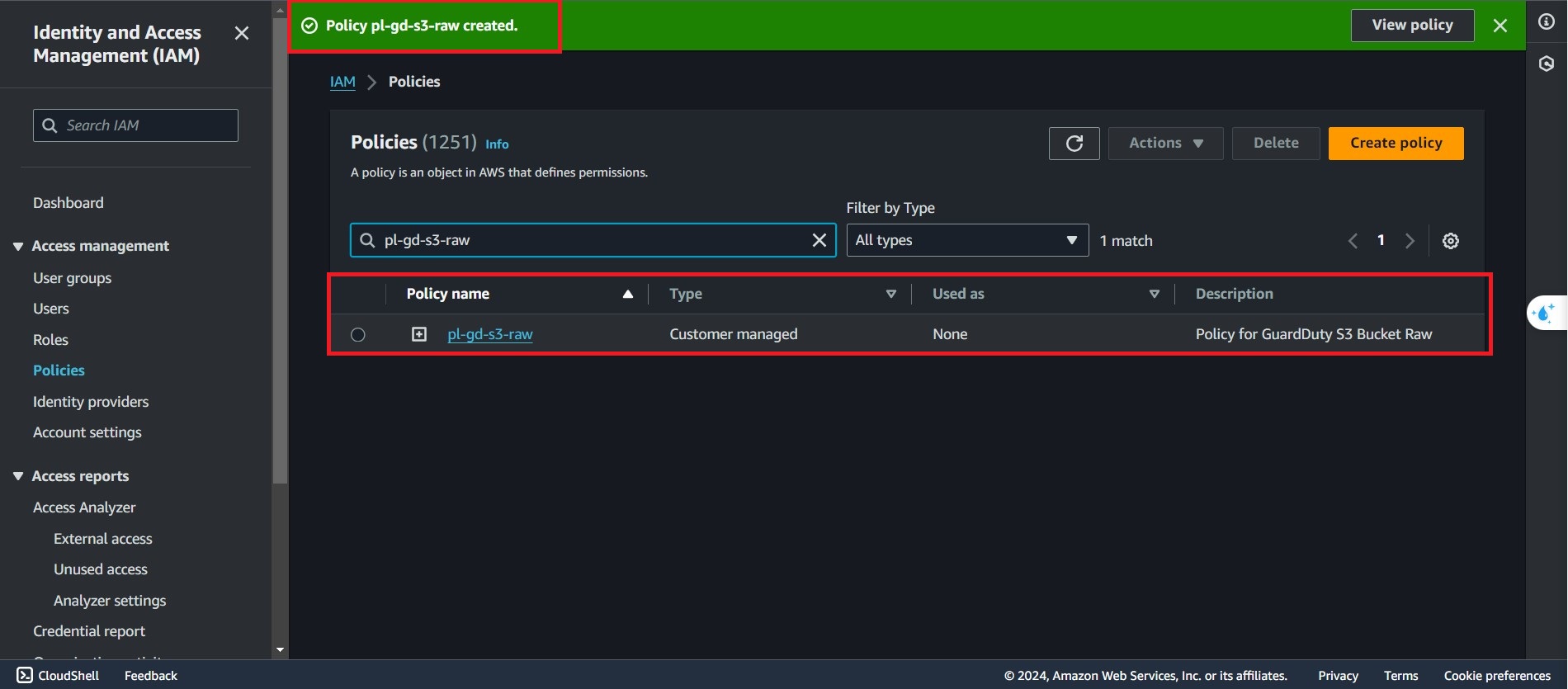Create IAM Protection Policy
Overview
In the previous step, we have create and modify the malware protection and recieve a JSON Policy. Now let custom IAM Policy to make this works!
- In the AWS Console interface, search and select IAM
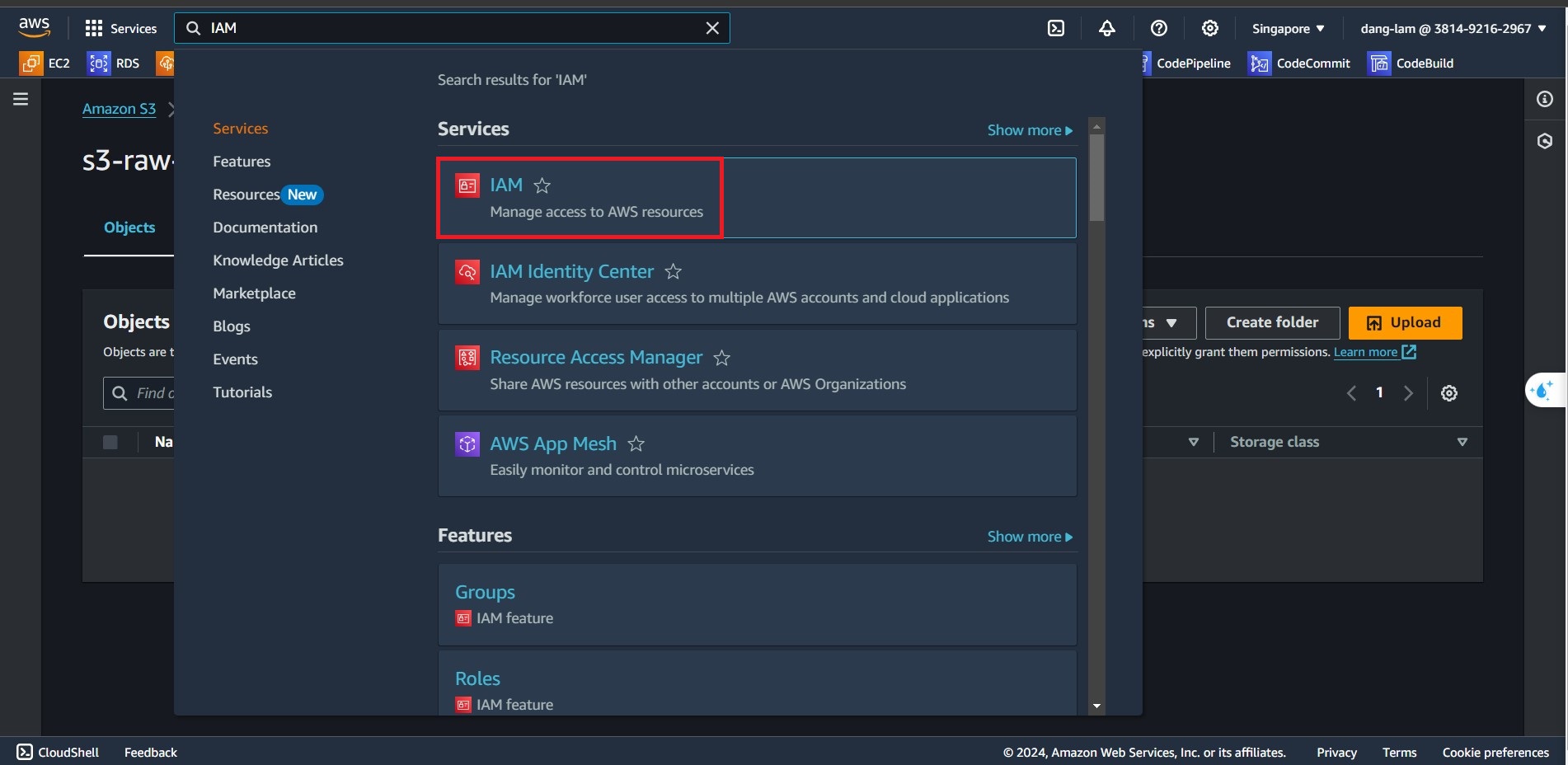
- In the left-side navigate bar, select Policies and choose Create Policy
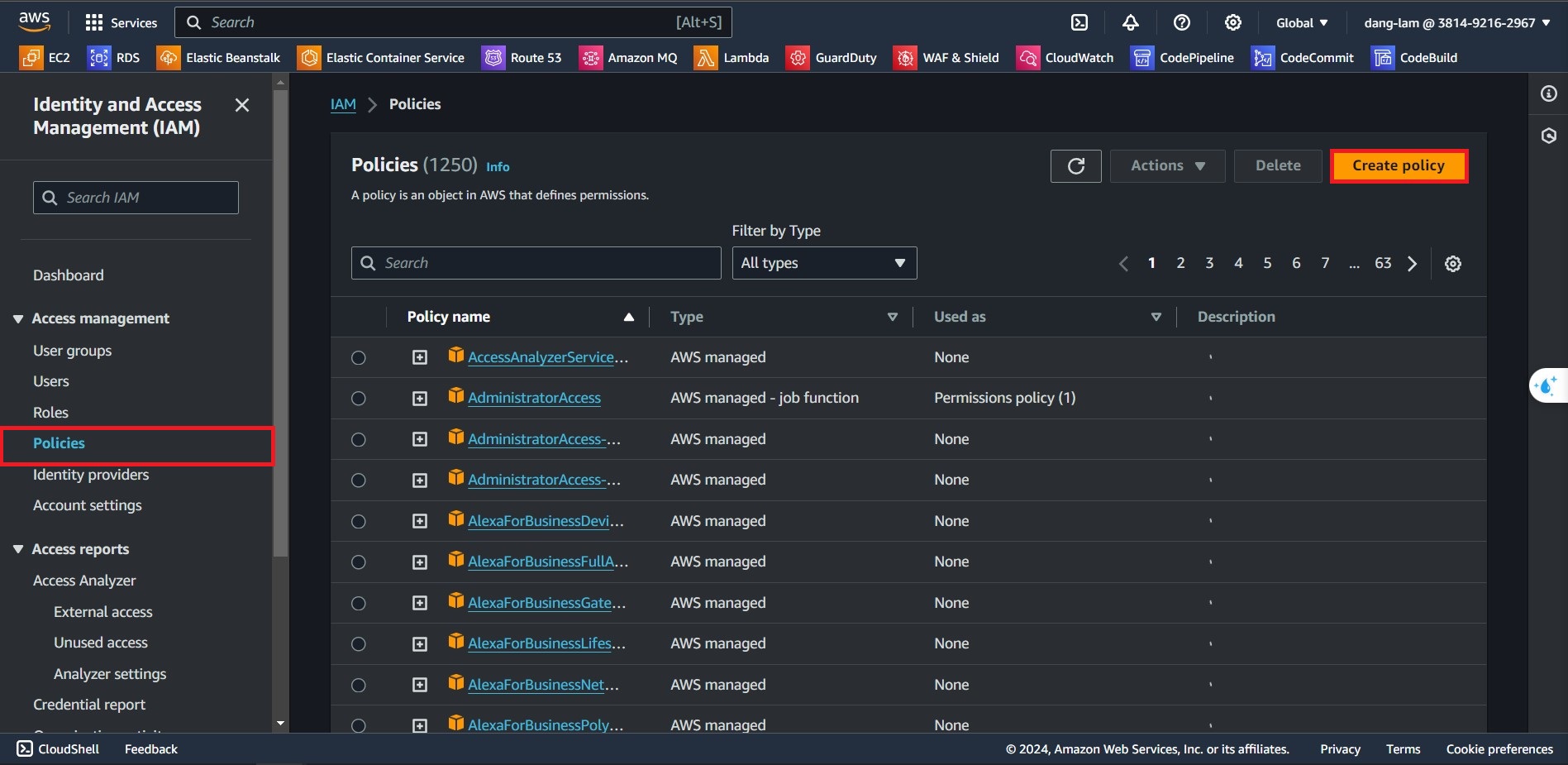
In the Specific Permission section:
- Select JSON options
Paste the previous Permission Policy in 3.1 sections
{ "Version": "2012-10-17", "Statement": [ { "Sid": "AllowManagedRuleToSendS3EventsToGuardDuty", "Effect": "Allow", "Action": [ "events:PutRule", "events:DeleteRule", "events:PutTargets", "events:RemoveTargets" ], "Resource": [ "arn:aws:events:ap-southeast-1:381492162967:rule/DO-NOT-DELETE-AmazonGuardDutyMalwareProtectionS3*" ], "Condition": { "StringLike": { "events:ManagedBy": "malware-protection-plan.guardduty.amazonaws.com" } } }, { "Sid": "AllowGuardDutyToMonitorEventBridgeManagedRule", "Effect": "Allow", "Action": [ "events:DescribeRule", "events:ListTargetsByRule" ], "Resource": [ "arn:aws:events:ap-southeast-1:381492162967:rule/DO-NOT-DELETE-AmazonGuardDutyMalwareProtectionS3*" ] }, { "Sid": "AllowPostScanTag", "Effect": "Allow", "Action": [ "s3:PutObjectTagging", "s3:GetObjectTagging", "s3:PutObjectVersionTagging", "s3:GetObjectVersionTagging" ], "Resource": [ "arn:aws:s3:::<bucket_name>/*" ] }, { "Sid": "AllowEnableS3EventBridgeEvents", "Effect": "Allow", "Action": [ "s3:PutBucketNotification", "s3:GetBucketNotification" ], "Resource": [ "arn:aws:s3:::<bucket_name>" ] }, { "Sid": "AllowPutValidationObject", "Effect": "Allow", "Action": [ "s3:PutObject" ], "Resource": [ "arn:aws:s3:::<bucket_name>/malware-protection-resource-validation-object" ] }, { "Effect": "Allow", "Action": [ "s3:ListBucket" ], "Resource": [ "arn:aws:s3:::<bucket_name>" ] }, { "Sid": "AllowMalwareScan", "Effect": "Allow", "Action": [ "s3:GetObject", "s3:GetObjectVersion" ], "Resource": [ "arn:aws:s3:::<bucket_name>/*" ] }, { "Sid": "AllowDecryptForMalwareScan", "Effect": "Allow", "Action": [ "kms:GenerateDataKey", "kms:Decrypt" ], "Resource": "arn:aws:kms:ap-southeast-1:381492162967:key/<key_id>", "Condition": { "StringLike": { "kms:ViaService": "s3.*.amazonaws.com" } } } ] }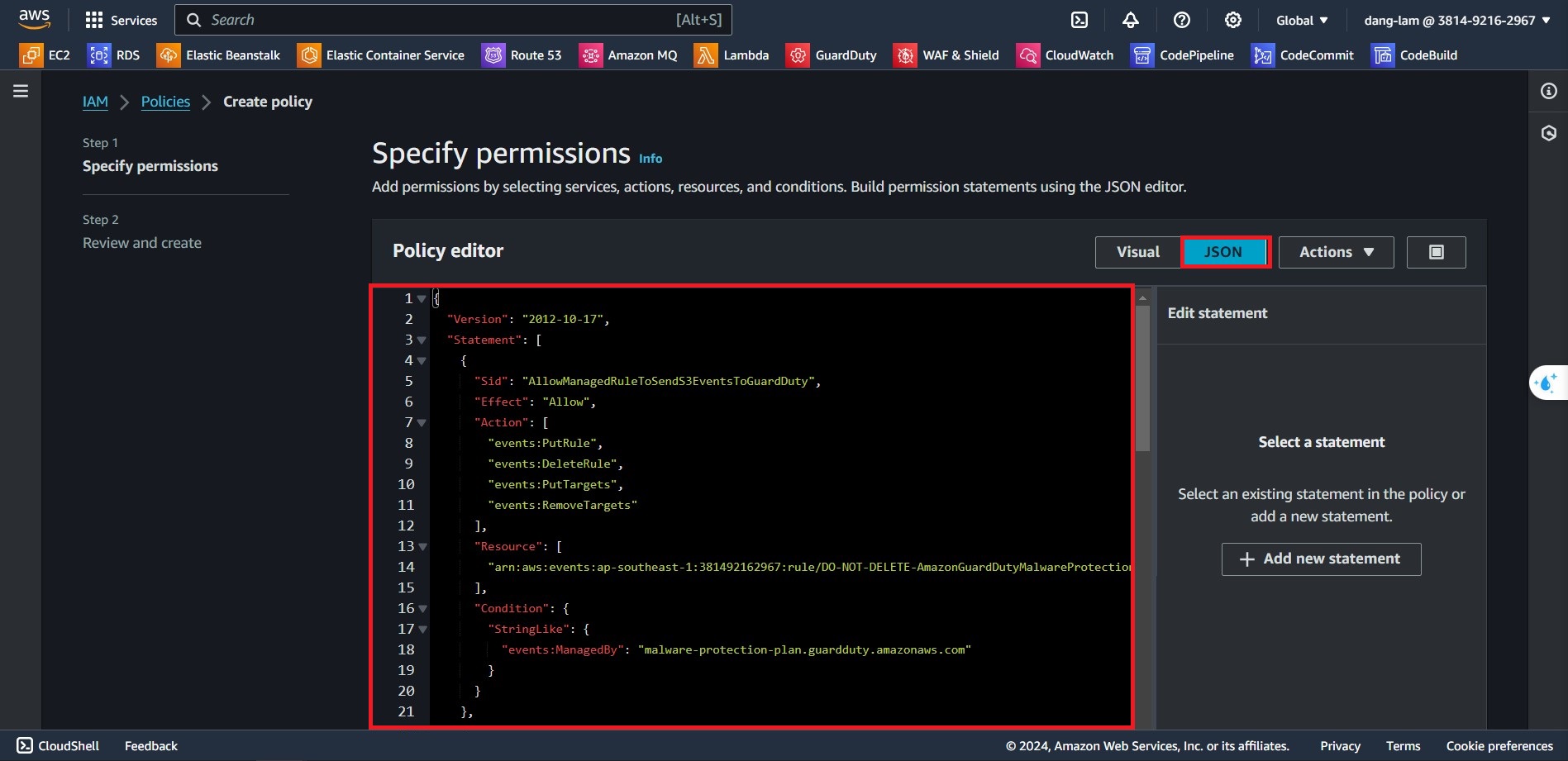
Next to Review and Create step,choose a policy name in the Policy Details, we will go for
pl-gd-s3-raw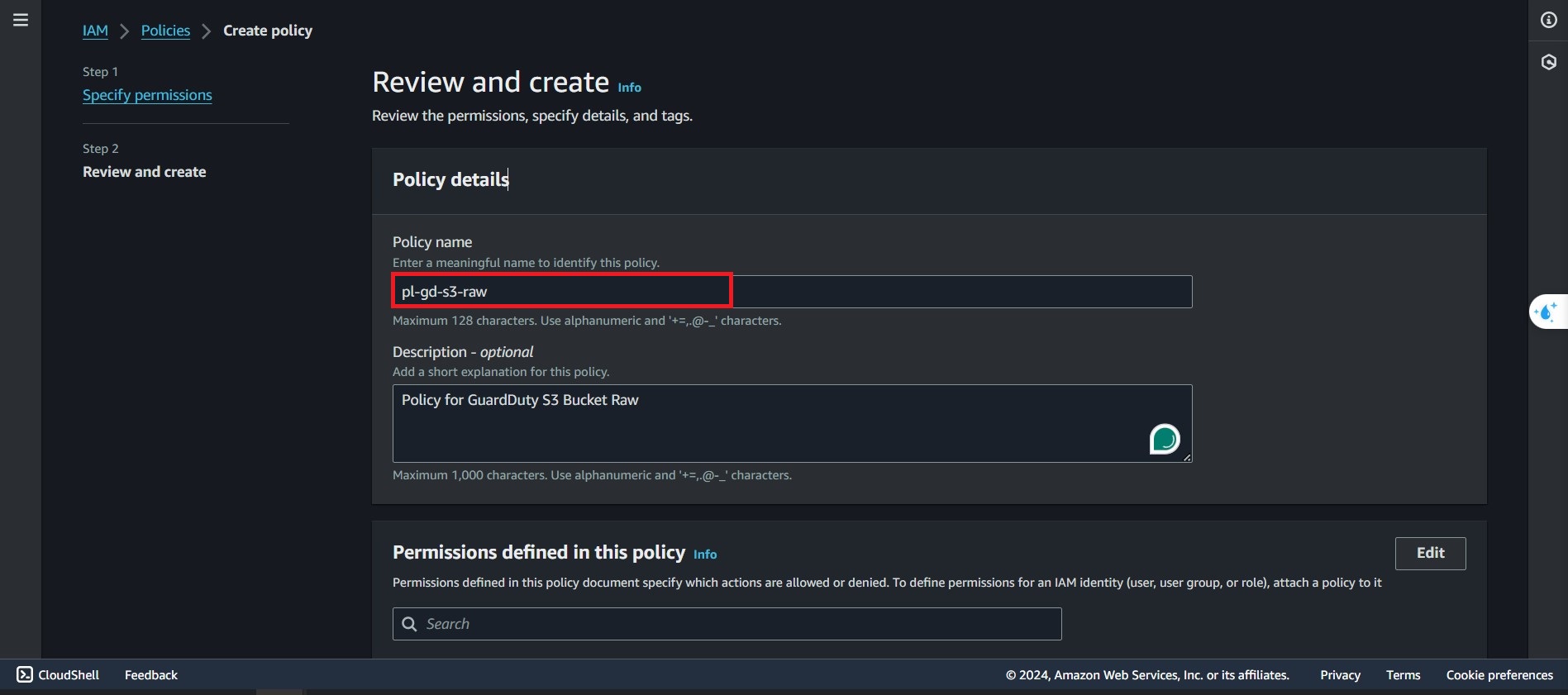
Review the Policy:
- EventBridge: Limited access with List, Read, and Write permissions. It has conditions to manage events from Amazon GuardDuty related to malware protection.
- KMS (Key Management Service): Write permissions are provided with restrictions based on key IDs and regions, and must be accessed through the S3 service.
- S3 (Simple Storage Service): List, Read, Write, and Tagging permissions, with no specific conditions applied.
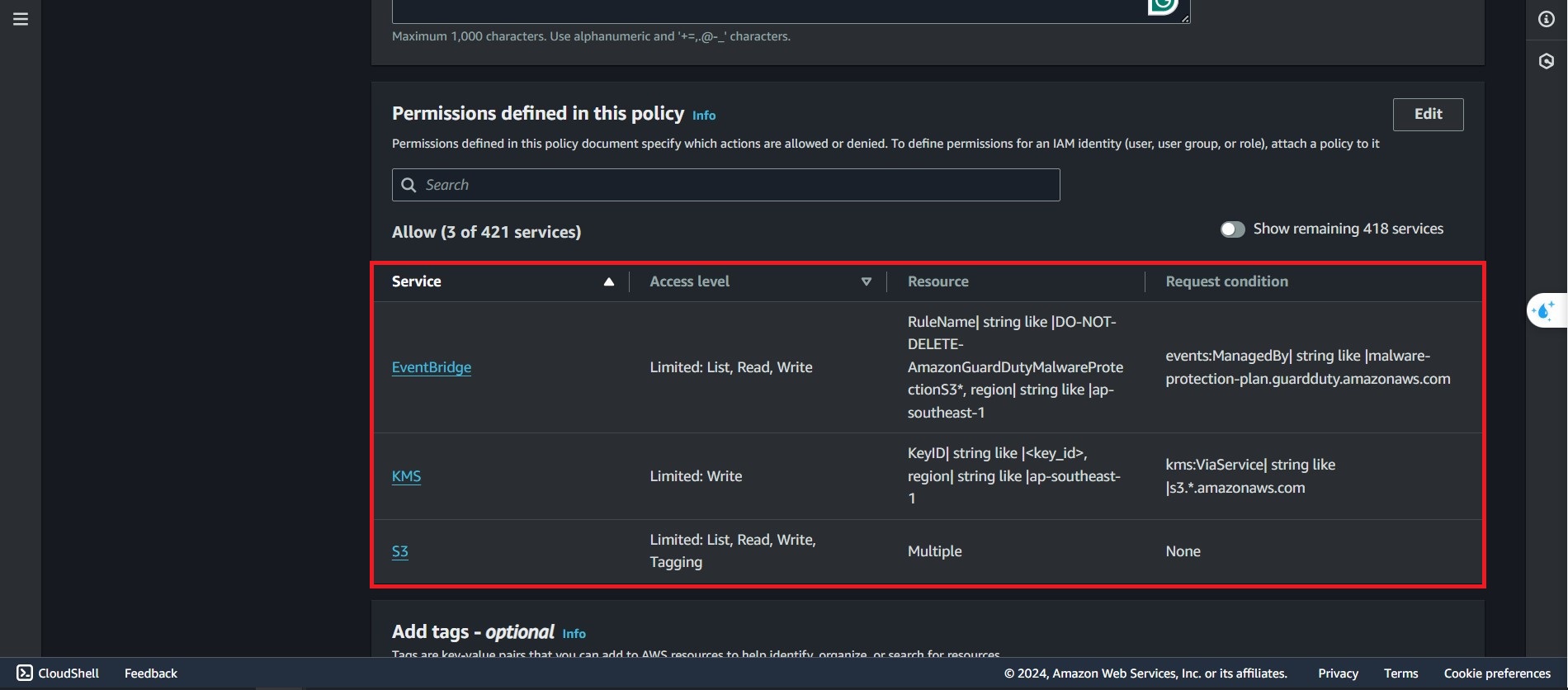
Create Policy
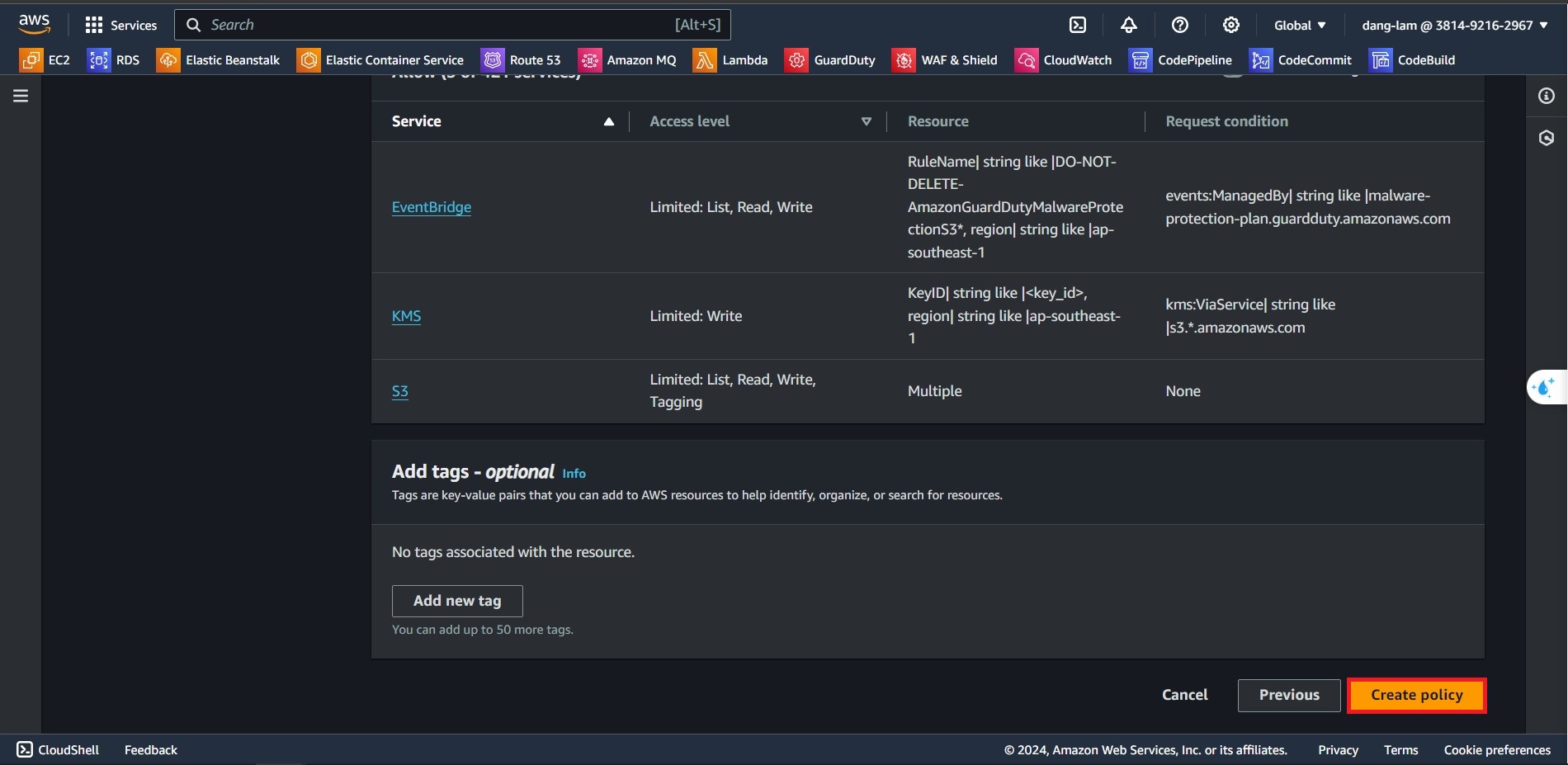
Complete create policy
